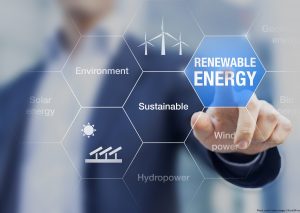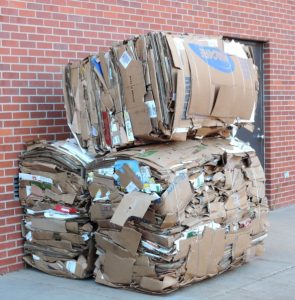by LaurenL | Oct 13, 2016
 For many businesses, a common barrier to recycling is a lack of resources. For businesses that handle recyclable cans, PET bottles, or cartons, depackaging equipment can help. While there are depackaging companies that can handle this task for you, many businesses now opt to complete the simple process themselves. Typically, these types of containers are not recycled because, in order to do so, they must first be rinsed of their liquid waste. A depackaging machine can do this task for you, while also benefiting your recycling efforts in other surprising ways. Here’s how.
For many businesses, a common barrier to recycling is a lack of resources. For businesses that handle recyclable cans, PET bottles, or cartons, depackaging equipment can help. While there are depackaging companies that can handle this task for you, many businesses now opt to complete the simple process themselves. Typically, these types of containers are not recycled because, in order to do so, they must first be rinsed of their liquid waste. A depackaging machine can do this task for you, while also benefiting your recycling efforts in other surprising ways. Here’s how.
1. No Pre-Cleaning Required
Depackaging is an integral part of waste management processes for zero waste businesses in the food industry. Thanks to this technology, they can easily separate recyclable containers from the food waste that may be inside. Food depackaging equipment varies, but popular models either unscrew bottles, or perforate cans, cartons, and bottles and then rinse whatever liquid is contained inside. This is particularly good for depackaging milk, yogurt, soft drinks, BBQ sauces and ketchup, ice cream, liquid soaps and detergents, and more.
Often, precleaning keeps people from recycling. However, with the right depackaging equipment, you can simply throw full containers into the machine. These containers are perforated or unscrewed by the machine. Then, the depackaging equipment works its magic. Food waste and other liquids inside containers are removed.
2. Recyclable Material is More Easily Managed
Not only does depackaging save you time that would otherwise be devoted to emptying containers of their waste, it can also save you money in your pursuit of zero waste. The best depackaging systems also have compaction chambers. After your containers are perforated and emptied, they are shredded or compressed tightly. With depackaging equipment that also has a high compaction rate, you’ll be able to load more recyclable waste on a single truck and make fewer trips to recycling centers or Waste to Energy plants. Because of this, you’ll spend less money on managing your recyclable waste.
3. Non-recyclable Items Can Be Repurposed
A little-known fact: depackaging equipment can also help businesses manage non-recyclable items like styrofoam or other similar materials. If your business is often left with EPS Polystyrene fish boxes and packaging, EPS dust, polypropylene packaging and insulation foam, or polypropylene (EPP) packaging, depackaging equipment can help you manage this waste. Like recyclables, these items can be emptied of any waste they may hold.Then, the foam that is left over can be condensed to create large blocks of foam. These blocks can then be sold, creating a new revenue stream for your business.
Integrate Depackaging Into Your Waste Management Process with KenBay!
If you think your waste management process could benefit from depackaging, let KenBay help you find the perfect equipment to get the job done. Our SC 2000 and SC 3000 Screw Compactors are configured for depackaging, dewatering or foam densifying. If you want to make your facility landfill free, these screw compactors can be an integral part of your waste management system. Low maintenance and heavy-duty, a KenBay screw compactor is capable of handling large throughputs of material while still maintaining a high compaction rate continuously throughout the operation.
We know that waste management can be a burden. But, with KenBay, you’ll have the tools you need to help make the job a little easier. The next time you evaluate your waste products and waste management strategy, consider integrating one of our industrial trash compactors into your processes.
Because our depackaging trash compactors will reduce the weight and size of your recyclable waste, they are a great way to cut down your waste removal costs and improve the efficiency of waste management.
Don’t let something like waste get in the way of your business operations. If you’re interested in learning more about depackaging or finding a committed consultant to help you reduce your waste, call KenBay. We can tell you more about our services, no matter what industry you’re in, or how much waste you are creating!
Photo credit: Getty Images / photka
by LaurenL | Sep 30, 2016
 Using renewable energy is a hot topic in the waste management industry, but it’s one that many people know less about than they think. Sure, we all recognize the most common renewable energy sources, like solar power and wind energy. But, there are many other types of renewable energy that aren’t quite as common knowledge. Did you know that sewage waste is now being used to heat and cool buildings? Or, that wasted food is used to generate electricity? Our waste has increasingly become a valuable way to replace non-renewable energy sources. Here are a few surprising examples:
Using renewable energy is a hot topic in the waste management industry, but it’s one that many people know less about than they think. Sure, we all recognize the most common renewable energy sources, like solar power and wind energy. But, there are many other types of renewable energy that aren’t quite as common knowledge. Did you know that sewage waste is now being used to heat and cool buildings? Or, that wasted food is used to generate electricity? Our waste has increasingly become a valuable way to replace non-renewable energy sources. Here are a few surprising examples:
1. Biomass
Biomass, organic materials like scrap lumber, forest debris, crops, and manure, can be used as fuel to create electricity or other forms of power. This type of waste, which generally comes from demolition, construction, or farming practices, can be burned to create heat. In biomass power plants, this heat is harnessed and used to heat industries and homes, or it is used to produce steam. The steam from burning biomass fuel is used to run turbines to make electricity.
2. Sewage
There is a near constant stream of warm sewage that comes from the biomatter, dishwashers, showers, and industrial processes that produce hot water and send it down the drain. Researchers in China have found ways to capture this heat and use it to regulate temperature inside buildings. In Philadelphia, this technology has been installed at the Southeast Wastewater Treatment Plant. Using only sewage and wastewater, a 20,000 square foot compressor building at the plant is fully heated and cooled by the system.
3. Landfill Gas
The life cycle of your garbage doesn’t end when it’s dumped at the landfill. Instead, once there, the decomposition of solid waste begins to produce a byproduct that can be used in surprising ways. Methane gas, a by-product of garbage decomposition, is collected at landfills and used as thermal energy, to generate electricity, or to do both at the same time. Landfill gas is also being used as an alternative to fossil fuels like natural gas.
4. Waste Heat
Major data centers, like IBM’s Zurich Research Laboratory, use water to cool down its servers. Once the water has done its job, these centers are left with hot water that is often treated as waste heat. Now, instead of disposing of this waste, it is being used to heat nearby homes. Much like hot sewage is used to warm buildings, other forms of waste heat, like that produced when cooling machinery, can be used to generate alternative heating and cooling systems.
5. Food Waste
Heartland Biogas Project in northern Colorado is just one example of an organization that is finding ways to use food waste to create energy. They, like many others, collect millions of gallons of food waste and combine it with anaerobic digesters. These digesters are bacteria that break down the waste. In the process, they give off methane. This methane is a powerful gas used to generate electricity and other forms of renewable energy.
How KenBay Can Help You Manage Your Waste
Whether or not your business produces waste that can be used as a renewable energy source, we know waste management can be a burden. Because trash compactors will reduce the weight and size of your waste, they are a great way to cut down your waste removal costs and improve the efficiency of waste management.
Trash compactors like KenBay’s RotoPac are ideal for industrial settings, and allow companies to reduce the volume of their trash at a ratio of six to one. The RotoPac can handle all kinds of waste from food to recyclables, and even solid hazardous waste.
Don’t let something like a waste get in the way of your business operations. If you’re interested in trash compactors or finding a committed consultant to help you reduce your waste, call KenBay. We can tell you more about our services, no matter what industry you’re in, or how much waste you are creating!
Photo credit: Getty Images / NicoElNino
by charlotte | May 6, 2016
 With the new year well underway, it’s time to start thinking about those small business investments you’ve been wanting to get to one of these days. With a minimal investment, waste management can be a crucial step in streamlining manufacturing processes as well as reducing costs. A trash compactor is one of the surest ways to get a return on your investment quickly while minimizing your environmental footprint by sending less waste to the landfill. With a little bit of innovation and the right equipment, you can completely makeover your waste strategy for the better of both your business and the world.
With the new year well underway, it’s time to start thinking about those small business investments you’ve been wanting to get to one of these days. With a minimal investment, waste management can be a crucial step in streamlining manufacturing processes as well as reducing costs. A trash compactor is one of the surest ways to get a return on your investment quickly while minimizing your environmental footprint by sending less waste to the landfill. With a little bit of innovation and the right equipment, you can completely makeover your waste strategy for the better of both your business and the world.
Why a Trash Compactor
No matter what industry you’re in there is a trash compactor that will work perfectly for you without taking up any more space in your facility than a standard sized pallet. The small footprint RotoPac by KenBay only needs a space of 4 by 5 feet to fit comfortably in your workspace. While it takes up very little room, it actually increases your space for waste as it compacts everything from food waste to general manufacturing waste. When you optimize your waste management with a trash compactor, you will also significantly reduce your waste removal costs, as your trash is reduced at a ratio of six to one, compacting up to 300 pounds per hour. Not only does a trash compactor reduce the volume of your waste, but it can also significantly increase your workflow efficiency.
Trash Compactor Options
KenBay offers a trash compactor for nearly every industry from the chemical industries to the food and beverage industry. Here are some of our best specs.
- RotoPac
The most versatile trash compactor of the bunch, the RotoPac works in manufacturing and assembly plants, marine environments, food and beverage, distribution centers, aerospace facilities and on ships. It is good to handle all non-metallic solid waste, anti-theft materials, recyclables, hazardous solids and much more. With a trash compactor bag the RotoPac can handle just about any kind of waste you are producing and reduce its size significantly.
- HazPac
Whether you’re disposing of your solid hazardous waste in approved bags or boxes, the HazPac can handle it ensuring that you are disposing of it safely and compactly. All three types of solid hazardous waste are approved for this model.
- BlastPac
This is the explosion proof trash compactor designed to operate safely in environments where there might be flammable gasses or vapors present. There are two classes of BlastPac depending on whether your facility may have flammable gas or dust.
- SacPac
Perfect for any food manufacturing environment, the SacPac is the ideal trash compactor for both food packaging and recyclable materials.
- SeaPac
The marine trash compactor is built to withstand extreme environments like oil rigs in the tropics and meets the worldwide standards for these circumstances.
Will an otherwise easily overlooked thing like waste really inhibit your productivity? Most people don’t even realize it until they start considering new waste management methods to reduce costs, but find that they are also increasing productivity and safety as well. Call KenBay to learn more about the perfect trash compactor for your business.
 For many businesses, a common barrier to recycling is a lack of resources. For businesses that handle recyclable cans, PET bottles, or cartons, depackaging equipment can help. While there are depackaging companies that can handle this task for you, many businesses now opt to complete the simple process themselves. Typically, these types of containers are not recycled because, in order to do so, they must first be rinsed of their liquid waste. A depackaging machine can do this task for you, while also benefiting your recycling efforts in other surprising ways. Here’s how.
For many businesses, a common barrier to recycling is a lack of resources. For businesses that handle recyclable cans, PET bottles, or cartons, depackaging equipment can help. While there are depackaging companies that can handle this task for you, many businesses now opt to complete the simple process themselves. Typically, these types of containers are not recycled because, in order to do so, they must first be rinsed of their liquid waste. A depackaging machine can do this task for you, while also benefiting your recycling efforts in other surprising ways. Here’s how.

 Using renewable energy is a hot topic in the waste management industry, but it’s one that many people know less about than they think. Sure, we all recognize the most common renewable energy sources, like solar power and wind energy. But, there are many other types of renewable energy that aren’t quite as common knowledge. Did you know that sewage waste is now being used to heat and cool buildings? Or, that wasted food is used to generate electricity? Our waste has increasingly become a valuable way to replace non-renewable energy sources. Here are a few surprising examples:
Using renewable energy is a hot topic in the waste management industry, but it’s one that many people know less about than they think. Sure, we all recognize the most common renewable energy sources, like solar power and wind energy. But, there are many other types of renewable energy that aren’t quite as common knowledge. Did you know that sewage waste is now being used to heat and cool buildings? Or, that wasted food is used to generate electricity? Our waste has increasingly become a valuable way to replace non-renewable energy sources. Here are a few surprising examples:  With the new year well underway, it’s time to start thinking about those small business investments you’ve been wanting to get to one of these days. With a minimal investment, waste management can be a crucial step in streamlining manufacturing processes as well as reducing costs. A
With the new year well underway, it’s time to start thinking about those small business investments you’ve been wanting to get to one of these days. With a minimal investment, waste management can be a crucial step in streamlining manufacturing processes as well as reducing costs. A